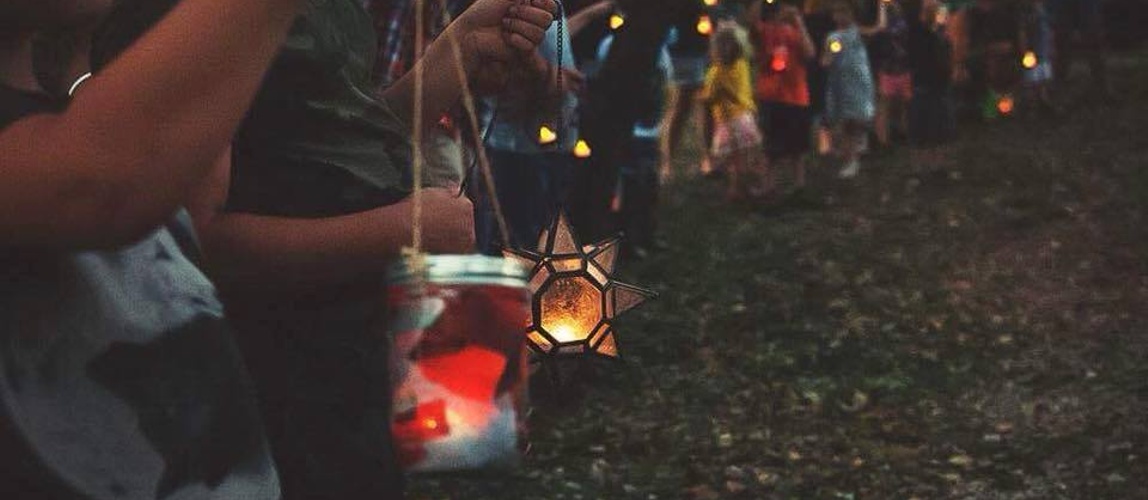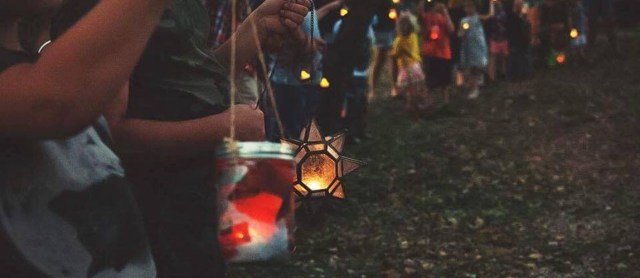
At 2 a.m. on Sunday, November 1st, most Americans still turn the clocks back one hour as we end “daylight saving time.” For most of us, this kicks off a stretch of lost daylight and a new darkness that will define both ends of our days for the coming months. That change can translate into a frustrating or even saddening sense of loss—loss for the good weather, the time to exercise, or even just the time to get things done. And, for many people this year, the shorter, colder days mean it’s more challenging to gather safely outdoors with friends.
Here’s how to help your kids—and yourself—embrace the time change and move toward a new season with spirits a little more lifted.
Lean into the Darkness
Though there are some movements to end the practice of turning the clocks twice per year, there is really nothing we can do to change how daylight fades as we head towards winter. What we can control, however, is how we react to the darkness. So, if we want to thrive, we should try to just lean on in.
That said, we want to acknowledge that, for some, the time change can lead to seasonal affective disorder (SAD), a type of depression related to changes in seasons. The advice we’re about to offer is not a cure, so if you think you or your child might be experiencing SAD, we’d encourage you to seek help from a medical professional.
But if your family is simply feeling a little down, try making the darkness fun. To get started, consider what special objects or rituals you could add to your home routine to make the early darkness feel special or fun. Focus on what the Danish, who repeatedly ranks as the world’s happiest people in spite of their long winters, call hygge—the art of creating a cozy home environment. Bust out fuzzy blankets, light candles or build fires if you have a fireplace. Start to enjoy warm herbal tea or cocoa in the afternoons or evenings. Aromatherapy from essential oils like bergamot, lemon, lavender, or cedar can also boost your mood.
The early darkness can also offer delightful moments when you experience it outdoors. Use lanterns or flashlights to go outside to look, listen, and feel the darkness. Little kids rarely get to gaze at the night sky when days are longer, so, if you can get outside before bed, enjoy adding a step into your bedtime routine to say goodnight to the moon and stars.
You can even see the new, early darkness as an opportunity to teach kids a valuable lesson about embracing change. That is what inspired us to create our annual Fall Lantern Walk event. Eight years in, hundreds of thousands of Tinkergarten families have made homemade lanterns and gone out at dusk on the first night after we change clocks. We come together to celebrate nature’s seasonal shifts and we sing songs, walk and just enjoy the beauty of our lights against the darkness. Visit our site to sign up to walk and receive free lantern-making directions, how-to guides, and access to special, live events.
As a parent, every time we change the clocks, it not only throws us for a loop, but it knocks our kids’ schedules out of whack, too. One of the toughest parts of “falling back” is that kids wake up really early for a few days and are not ready for bedtime. Here are our tried and true tips to help make the transition a little smoother.
1. Start ahead. If you can, move bed-time 10-15 minutes earlier each night starting three or four days ahead of the end of Daylight Saving Time. If your family is like mine and rarely plans that far ahead, just find solace in the fact that bedtime should go back to the normal hour in a few days.
2. Limit blue light. Melatonin is a hormone the body releases to help us get ready to sleep. The blue light of screens tends to block the release of melatonin and even resets the body’s natural sleep rhythms, delaying bedtime. So, now more than ever, limit screen time for the hour before bed.
3. Enjoy the late bedtime for a few days. Some kids have no problem going to bed an hour earlier, but if yours are like ours, their little bodies need a few days to transition. So, rather than fight it during the days it takes to reset, enjoy the time with soothing activities like reading an extra few stories, listening to calming music or nature sounds, or making a cozy fort to cuddle in (more hygge!).











